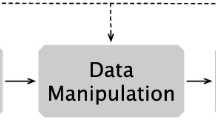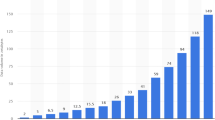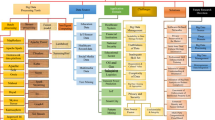Abstract
Cloud intelligence is a collection of technologies emerging from the migration of business intelligence and analytics technologies to a cloud computing environment combined with exploiting the massive range of new intelligence opportunities opened up by cloud computing. Cloud computing introduces several trends which require traditional business intelligence techniques to be re-thought, including agility, the ability to assemble resources, e.g., data sources, on-demand, and virtualization, e.g., that data are provided as a service over the web rather than stored in local databases. This paper focuses on the combination of data source agility and data-as-a-service virtualization and its use for cloud intelligence. After presenting the novel vision of the Cloud Warehouse, the paper goes on to present a comprehensive semantic foundation for on-demand multidimensional data integration, including formal data models, a range of query operators and re-write rules for optimization. This semantic foundation provides a sound formal basis for on-demand multidimensional data integration, which is a cornerstone of cloud intelligence.
Similar content being viewed by others
References
Abadi DJ (2009) Data management in the cloud: limitations and opportunities. IEEE Data Eng Bull 32(1):3–12. Special issue on cloud data management
Body M, Miquel M, Bédard Y, Tchounikine A (2003) Handling evolutions in multidimensional structures. In: Proceedings of ICDE, pp 581–591
Agrawal R, Gupta A, Sarawagi S (1997) Modeling multidimensional databases. In: Proceedings of the thirteenth international conference on data engineering, pp 232–243
Beyer KS, Ercegovac V, Krishnamurthy R, Raghavan S, Rao J, Reiss F, Shekita EJ, Simmen DE, Tata S, Vaithyanathan S, Zhu H (2009) Towards a scalable enterprise content analytics platform. IEEE Data Eng Bull 32(1):28–35. Special issue on cloud data management
Christophides V, Cluet S, Simeon J (2000) On wrapping query languages and efficient XML integration. In: Proceedings of the ACM SIGMOD conference, pp 141–152
Du W, Krishnamurthy R, Shan M-C (1992) Query optimization in a heterogeneous DBMS. In: Proceedings of VLDB, pp 277–291
ECIX Quickdata Architecture. archives.si2.org/si2_publications// Current as of April 15, 2010
Eder J, Koncilia C (2001) Evolution of dimension data in temporal data warehouses. In: Proceedings of DaWaK, pp 284–293
Franklin MJ, Halevy AY, Maier D (2008) A first tutorial on dataspaces. In: Proceedings of the VLDB endowment, vol 1, pp 1516–1517
Garcia-Molina H et al (1997) The TSIMMIS approach to mediation: data models and languages. J Intell Inf Syst 8(2):117–132
Gingras F, Lakshmanan LVS (1998) nD-SQL: A multi-dimensional language for interoperability and OLAP. In: Proceedings of 24rd international conference on very large data bases, pp 134–145
Goldman R, Widom J (2000) WSQ/DSQ: A practical approach for combined querying of databases and the web. In: Proceedings of the ACM SIGMOD conference, pp 285–296
Gray J et al (1996) Data cube: a relational aggregation operator generalizing group-by, cross-tab, and sub-total. In: Proceedings of the twelfth international conference on data engineering, pp 152–159
Grefen PWPJ, de By RA (1994) A multi-set extended relational algebra—a formal approach to a practical issue. In: Proceedings of ICDE, pp 80–88
Gupta A, Harinarayan V, Quass D (1995) Aggregate-query processing in data warehousing environments. In: Proceedings of 21th international conference on very large data bases, pp 358–369
Haas LM, Kossmann S, Wimmers EL, Yang J (1997) Optimizing queries across diverse data sources. In: Proceedings of VLDB, pp 276–285
Hellerstein JM et al (1999) Independent, open enterprise data integration. IEEE Data Eng Bull 22(1):43–49
Hurtado C, Mendelzon A, Vaisman A (1999) Maintaining data cubes under dimension updates. In: Proceedings of ICDE, pp 346–355
Kang H-G, Chung C-W (2002) Exploiting versions for on-line data warehouse maintenance in MOLAP servers. In: Proceedings of VLDB, pp 742–753
Lehner W (1998) Modelling large scale OLAP scenarios. In: Proceedings of the sixth international conference on extending database technology, pp 153–167
Lenz H-J, Shoshani A (1997) Summarizability in OLAP and statistical databases. In: Proceedings of the ninth international conference on statistical and scientific database management, pp 39–48
Pedersen TB, Pedersen D, Pedersen J (2008) Integrating XML data in the TARGIT OLAP system. Int J Web Eng Technol 4(4):495–533
Pedersen D, Riis K, Pedersen TB (2002) A powerful and SQL-compatible data model and query language for OLAP. In: Proceedings of the thirteenth Australasian database conference, pp 121–130
Pedersen D, Riis K, Pedersen TB (2002) Query optimization for OLAP-XML federations. In: Proceedings of DOLAP, pp 57–64
Pedersen D, Riis K, Pedersen TB (2002) Cost modeling and estimation for OLAP-XML federations. In: Proceedings of the fourth international conference on data warehousing and knowledge discovery
Pedersen D, Riis K, Pedersen TB (2002) XML-extended OLAP querying. In: Proceedings of the fourteenth international conference on scientific and statistical database management, pp 195–206
Pedersen D, Pedersen TB, Riis K (2004) The decoration operator: a foundation for on-line dimensional data integration. In: Proceedings of the eighth international database engineering and application symposium.
Pedersen TB (2009) Warehousing the world: a vision for data warehouse research. In: Annals of Information Systems, vol 3
Pedersen TB (2010) Research challenges for cloud intelligence: invited keynote talk. In: Proceedings of the international workshop on business intelligence on the web, part of the EDBT/ICDT workshops, p 2010
Pedersen TB, Jensen CS (1998) Multidimensional data modeling for complex data. In: Proceedings of the fifteenth international conference on data engineering, pp 336–345
Pedersen TB, Jensen CS, Dyreson CE (1999) Extending practical pre-aggregation in on-line analytical processing. In: Proceedings of twenty-fifth international conference on very large data bases, pp 663–674
Pedersen TB et al (2000) Extending OLAP querying to external object databases. In: Proceedings of the ninth international conference on information and knowledge management, pp 405–413
Pérez JM, Berlanga Llavori R, Aramburu MJ, Pedersen TB (2008) Integrating data warehouses with web data: a survey. In: IEEE transactions on knowledge and data engineering, pp 940–955
Rafanelli M, Ricci FL (1983) Proposal of a logical model for statistical databases. In: Proceedings of the second international workshop on statistical database management, pp 264–272
Rafanelli M, Shoshani A (1990) STORM: a statistical object representation model. In: Proceedings of the fifth international conference on statistical and scientific database management, pp 14–29
Roth MT et al (1996) The Garlic project. In: Proceedings of SIGMOD, p 557
Sarma AS, Dong E, Halevy AY (2008) Bootstrapping pay-as-you-go data integration systems. In: Proceedings of SIGMOD, pp 861–874
Sheth AP, Larson JA (1990) Federated database systems for managing distributed, heterogeneous, and autonomous databases. ACM Comput Surv 22(3):183–236
Thomsen E (1997) OLAP solutions: building multidimensional information Systems. Wiley, New York
Thomsen E, Spofford G, Chase D (1999) Microsoft OLAP solutions. Wiley, New York
W3C. Extensible markup language (xml) 1.0. www.w3.org/TR/REC-xml. Current as of April 15, 2010
W3C. Xml path language (xpath) version 1.0. www.w3.org/TR/xpath. Current as of April 15, 2010
W3C. Xml schema part 0: Primer. www.w3.org/TR/xmlschema-0/. Current as of April 15, 2010
W3C. XQuery 1.0: An XML Query Language. www.w3.org/TR/xquery. Current as of April 15, 2010
Author information
Authors and Affiliations
Corresponding author
Rights and permissions
About this article
Cite this article
Pedersen, T.B., Pedersen, D. & Riis, K. On-demand multidimensional data integration: toward a semantic foundation for cloud intelligence. J Supercomput 65, 217–257 (2013). https://doi.org/10.1007/s11227-011-0712-3
Published:
Issue Date:
DOI: https://doi.org/10.1007/s11227-011-0712-3




